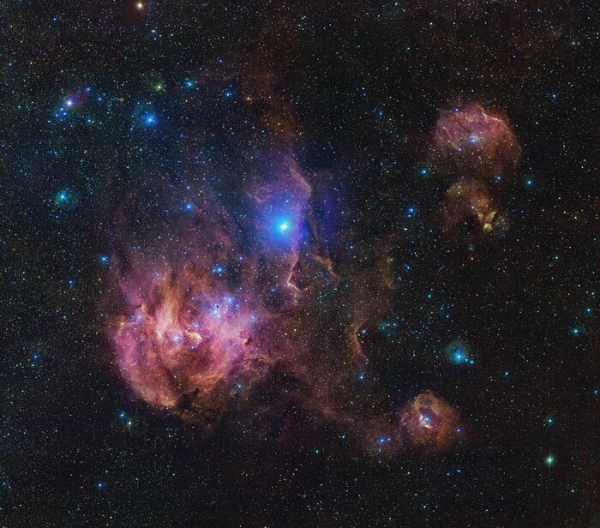While many holiday traditions involve feasts of turkey, soba noodles, latkes or Pan de Pascua, this year, the European Southern Observatory (ESO) is bringing you a holiday chicken. The so-called Running Chicken Nebula, home to young stars in the making, is revealed in spectacular detail in this 1.5-billion-pixel image captured by the VLT Survey Telescope (VST), hosted at ESO’s Paranal site in Chile.
This vast stellar nursery is located in the constellation Centaurus (the Centaur), at about 6500 light-years from Earth. Young stars within this nebula emit intense radiation that makes the surrounding hydrogen gas glow in shades of pink.
The Running Chicken Nebula actually comprises several regions, all of which we can see in this vast image that spans an area in the sky of about 25 full Moons [1]. The brightest region within the nebula is called IC 2948, where some people see the chicken’s head and others its rear end. The wispy pastel contours are ethereal plumes of gas and dust. Towards the centre of the image, marked by the bright, vertical, almost pillar-like, structure, is IC 2944. The brightest twinkle in this particular region is Lambda Centauri, a star visible to the naked eye that is much closer to us than the nebula itself.
Read more at European Southern Observatory
Image: The Running Chicken Nebula comprises several clouds, all of which we can see in this vast image from the VLT Survey Telescope (VST), hosted at ESO’s Paranal site. This 1.5-billion pixel image spans an area in the sky of about 25 full Moons. The clouds shown in wispy pink plumes are full of gas and dust, illuminated by the young and hot stars within them. (Credit: ESO/VPHAS+ team - Acknowledgement: CASU)


